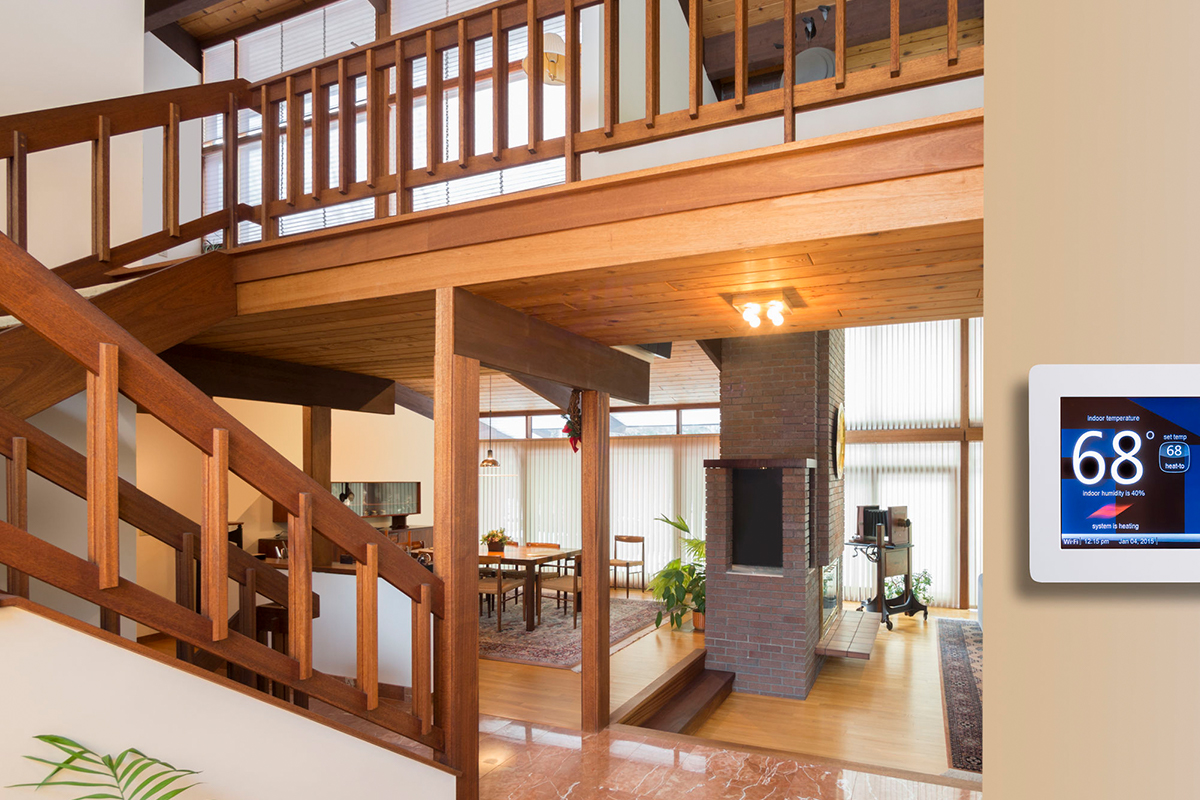
According to EnergyStar.gov, the average American household spends half of its annual energy bill on heating and cooling the home. Having the ability to control your temperature setting throughout the day saves energy, money, and keeps your home at its optimal comfortable temperature. If you’re considering replacing your home’s traditional thermostat with a smart thermostat, we’ve taken a closer look a the Highs and Lows of a Smart Thermostat.
What is a smart thermostat?
A smart thermostat adjusts the heating and cooling temp setting of your home by using WiFi, which enables you to manage it remotely from your smartphone. ranges
The Highs: What are the benefits of having a smart thermostat?
While smart thermostats vary in their capabilities, some standard features:
Smart thermostats are convenient.
Your smart thermostat will provide a brand app that you download onto your mobile device. The app allows you to check your thermostat anywhere you have WiFi. You can change the temp setting on your thermostat while at the office, running errands, or even on vacation. With your smart thermostat app, you can also set up app-based heating and cooling schedules for seasonal preferences.
Smart thermostats are…well, smart!
Although smart thermostats vary in capability, most utilize sensors and algorithms. Sensors can track your family’s energy use by taking note of the hours, your family is more often home, and when they’re more frequently away. This function will help schedule the heating and cooling of your home, which is going to save you energy and money. Smart thermostats learn your home’s temp preferences and will adjust when you are away.
Smart thermometers are compatible with voice-command technology.
Picture this. Your hands are covered in flour and oil, your kitchen is heating up, and your guests are arriving in half an hour. All you have to do is say: “Alexa, turn down the AC to 70 degrees.”
Smart thermostats use Geofencing.
Geofencing is a virtual perimeter of a real geographic area. Geofencing capabilities will alert the smart thermostat that you’re heading home and will adjust the temperature according to your preferences.
Smart thermostats are easy on the eyes.
Smart thermostats are aesthetically appealing, but they also offer greater visibility. They are generally lighter, brighter, and use large, digital, easy-to-read numbers for the display.
Smart thermostats can provide reporting.
Have you ever wondered how much energy you consumed when you ran your AC all night during last month’s heatwave? Some smart thermostats can show you in easy-to-read monthly reports that help you analyze your family’s energy usage. Aside from reporting, your smart thermostat will keep you up-to-date on when it’s time to change your system’s filters—no more trying to guess the last time you replaced them.
Smart thermostats can track the weather.
Is a heatwave headed your way? Some smart thermostats have sensors to automatically anticipate your indoor temperature needs based on incoming weather reports.
The Lows: What’s the downside to using a smart thermostat?
Smart thermostats can be pricey.
As we stated earlier, smart thermostat systems vary in their capabilities and price. Although sales are common on smart thermostats, a good quality one will run you about $200. EnergySage.com has a list of the Best Smart Thermostats in 2020, with some systems listed at $400. Some systems require the additional cost of professional installation. The cost of a traditional programmable thermostat starts at around $80 and does not require professional installation.
May be unnecessary
Is your home office the busiest room in the house? If someone is almost always home, programming your smart thermostat may be a bit more challenging. You won’t be raising or lowering the temperature of your home during the day if your home is consistently occupied. You would likely not see a significant increase in savings.
May not be compatible with your system.
Depending upon its age, your current heating and cooling unit may not be compatible with a smart thermostat.
Complex Programming
The setup of your smart thermostat system and interpretation of its display panel may not be something with which you’re interested in investing your time and patience. In short, this may come down to your personal preference and relationship with technology.
Security Concerns
Smart thermostats are subject to hacking and privacy concerns. Although you might think a hacker will not be interested in raising or lowering the temperature of your home, Travelers.com says, “smart thermostats can provide details about your daily comings and goings, which a thief could find insightful.”
Now that you know The Pros and Cons of a Smart Thermostat, deciding whether to switch out your traditional programmable thermostat for a smart thermostat, it is going to come down to personal preference. A traditional thermostat works best for those who can control their thermostat manually throughout the day. For those on the go 24/7, a smart thermostat is a small investment with the potential to save you money over time – but its true appeal is the control and convenience it offers users.
